In digital marketing’s fast-paced universe, a superstar called programmatic advertising has shown up. It’s changed how companies talk to their customers, with incredible speed, accuracy, and growth. Advanced machinery and up-to-the-minute information propel these programmatic advertising platforms. They make buying and selling ads automatic. So, marketers can make their campaigns better and make more money (ROI).
This guide will cover the best parts and pluses of programmatic advertising platforms. We’ll also talk about how your business can succeed using these tools. We’ll touch on precisely targeted audiences, immediate bids, optimizing across devices, and being able to grow. We will cover why programmatic advertising is a potential tool for marketers.
Table of Contents
What is Programmatic Advertising?

Programmatic advertising is about automating digital ad buying and selling. Imagine replacing manual haggling and order placements with smart software. It uses fancy math and computer learning to connect advertisers with fitting ad spots, instantly. This automated way boosts efficiency and reliance on data. It also lets advertisers pinpoint their desired viewers.
Key Features of Programmatic Advertising:
- Audience Targeting: Thanks to smart data handling, programmatic advertising platforms can find just the right people for your ads. They use things like age, hobbies, web habits, and where people are located.
- Real-Time Bidding (RTB): Like an auction, programmatic advertising platforms let advertisers bid for ad spots in real-time. This way, they only pay for the top spots that matter the most.
- Optimization and Reporting: Getting great ads out there is one thing. But knowing how well they do is important. Programmatic advertising platforms give you detailed reports to fine-tune your ads and know how well your money is spent.
- Cross-Device Targeting: Got something to sell? Have a brand? Programmatic advertising platforms make sure your ads reach people on all their gadgets. This gives a smooth, matching brand experience.
- Scalability and Efficiency: Buying and selling ads can take a lot of effort. Programmatic advertising platforms make this process automatic, letting advertisers grow their ads fast and easy, and saving a lot of hard work.
Top 15 Programmatic Advertising Platforms
There’s been a big increase in programmatic advertising. In fact, by next year, people might spend around $100 billion on it in the U.S. As things change, marketers need the best, most creative programmatic advertising platforms. They want to make their digital advertising plans work in 2024.
1. The Trade Desk
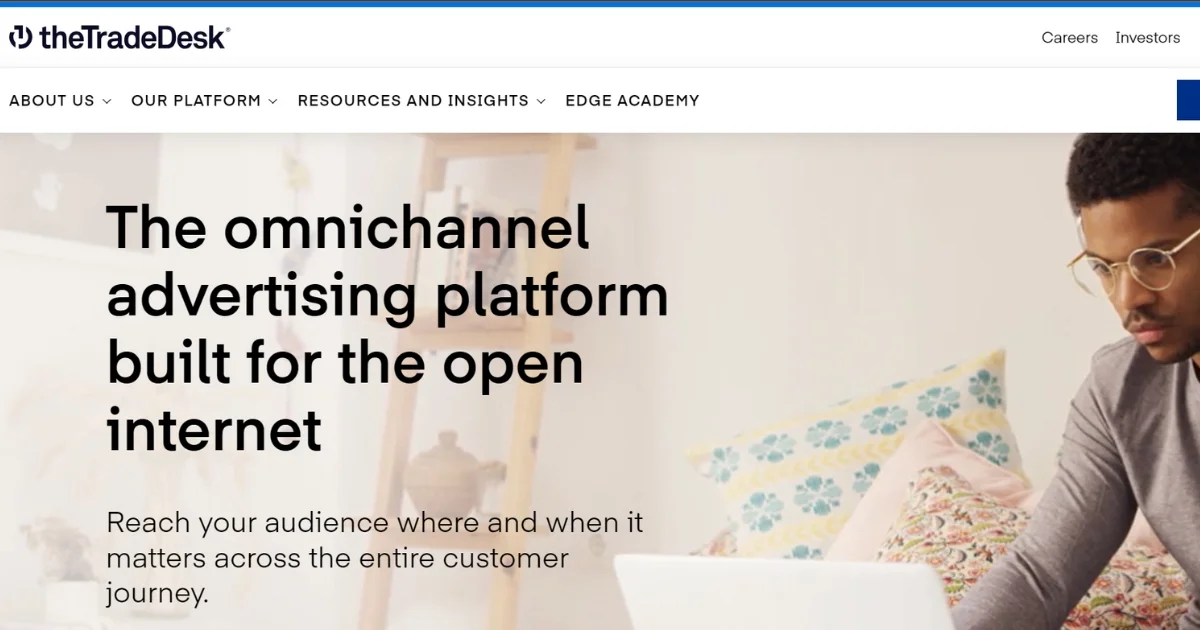
The Trade Desk is a top-notch DSP (demand-side platform). It allows advertisers to digitally buy and enhance ad campaigns across multiple channels. This can be TV, audio, display, or video. This platform uses complex algorithms and up-to-date data. This makes buying ads automated, letting the marketers target their audiences precisely to increase their profits. A prime selling point of The Trade Desk is its superior targeting features.
This one of the popular programmatic advertising platforms provides broad audience segmentation choices for advertisers. They can target audiences based on behaviour, context, demographics, or location. Advertisers can use The Trade Desk’s data or link with top data providers. This makes it easy to create custom audience segments and upgrade targeting strategies.
Pricing: 10-25% of the total ad spend
| Pros | Cons |
| Highly sophisticated and customizable targeting capabilities | Higher platform fees compared to some competitors |
| Advanced optimization and reporting tools | Steep learning curve for new users |
| Extensive data integrations and partnerships | Limited direct publisher integrations |
| Excellent customer support and service | – |
2. MediaMath
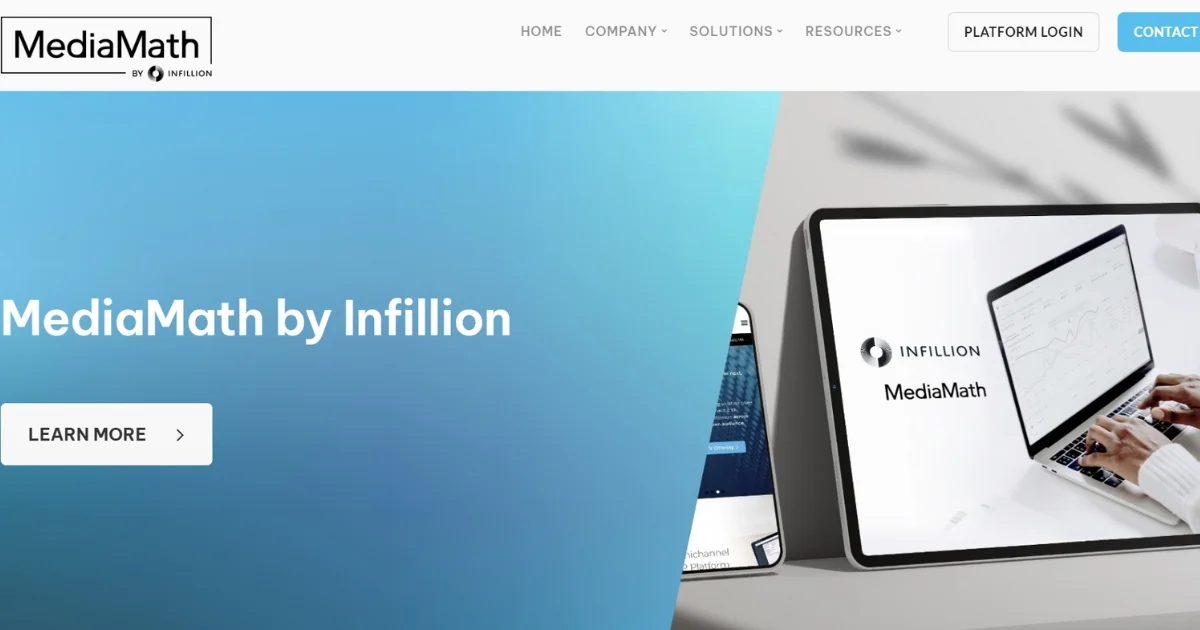
MediaMath stands as a top demand-side platform (DSP). It gives advertisers the ability to buy and tweak digital ads across different platforms like display, video, mobile, and connected TV (CTV) smartly and efficiently. The platform excels in zeroing in on audiences and segmenting them, plus, its dynamic campaign management and enhancement tools make it a strong fit for today’s marketers.
MediaMath’s concentration on the safety of brands and preventing scams is notable making it one of the in-demand programmatic advertising platforms. Working with top verification providers, it makes sure ads go out in a safe space and shields advertisers from invalid traffic and other ad fraud attempts. This dedication to high standards and clear-cut dealings sets them apart in the world of programmatic advertising.
Pricing: 10-25% of the total ad spend
| Pros | Cons |
| Robust audience targeting and segmentation | Can be more complex to set up and manage compared to some competitors |
| Comprehensive campaign management and optimization tools | Limited direct publisher integrations |
| Strong focus on brand safety and fraud prevention | Pricing can be less transparent than some other platforms |
| Flexible integration with various data and ad tech partners | – |
3. Lotame
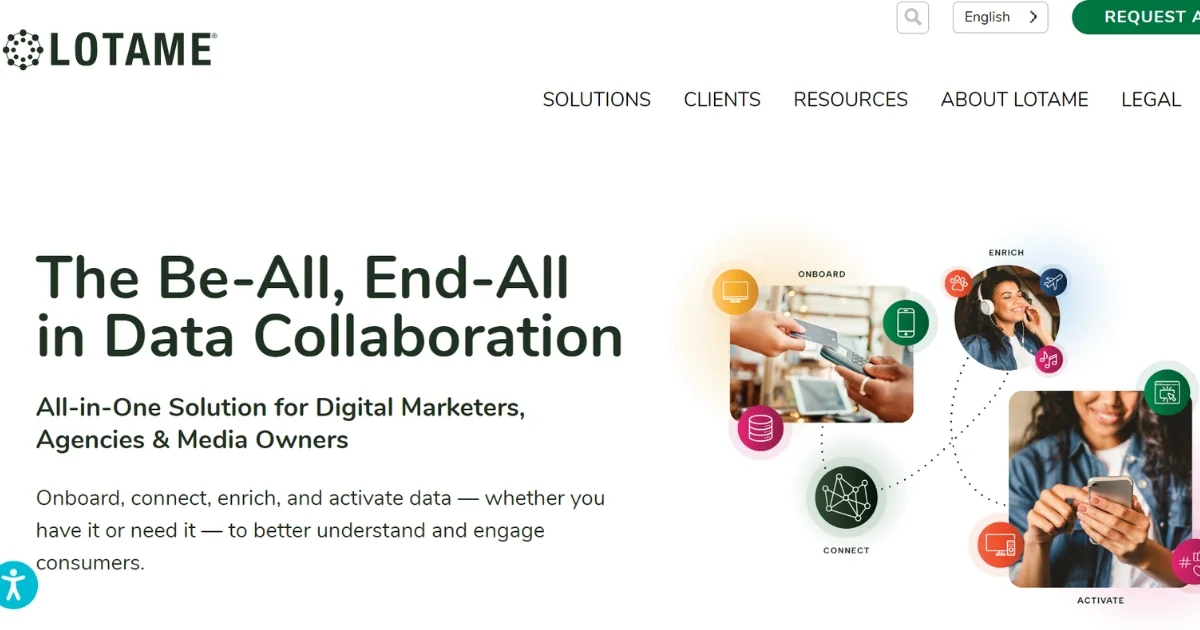
Lotame ranks high in the world of data management platforms (DMP). It offers a unique edge to advertisers, publishers, and marketing agents, allowing them to harness data-driven insights for digital marketing campaigns. Its robust data management and audience-building functions, along with its wide range of data integrations and affiliations, make it a crucial resource for up-to-date marketers.
A versatile pricing model is one of Lotame’s notable features. It provides both percentile platform charges for its DSP services and subscription fees for its DMP and other wares. It lets advertisers and publishers select the price setup that aligns perfectly with their particular requirements and financial capacities.
Pricing: 10-25% of the total ad spend
| Pros | Cons |
| Powerful data management and audience creation capabilities | Limited direct publisher integrations compared to some competitors |
| Extensive data integrations and partnerships | Can be more complex to set up and manage for smaller advertisers |
| Flexible pricing models to suit different business needs | Reporting and analytics may not be as advanced as some other platforms |
| Strong focus on privacy and data compliance | – |
Also Read: Best 10 Key Benefits of Email Marketing
4. DoubleVerify
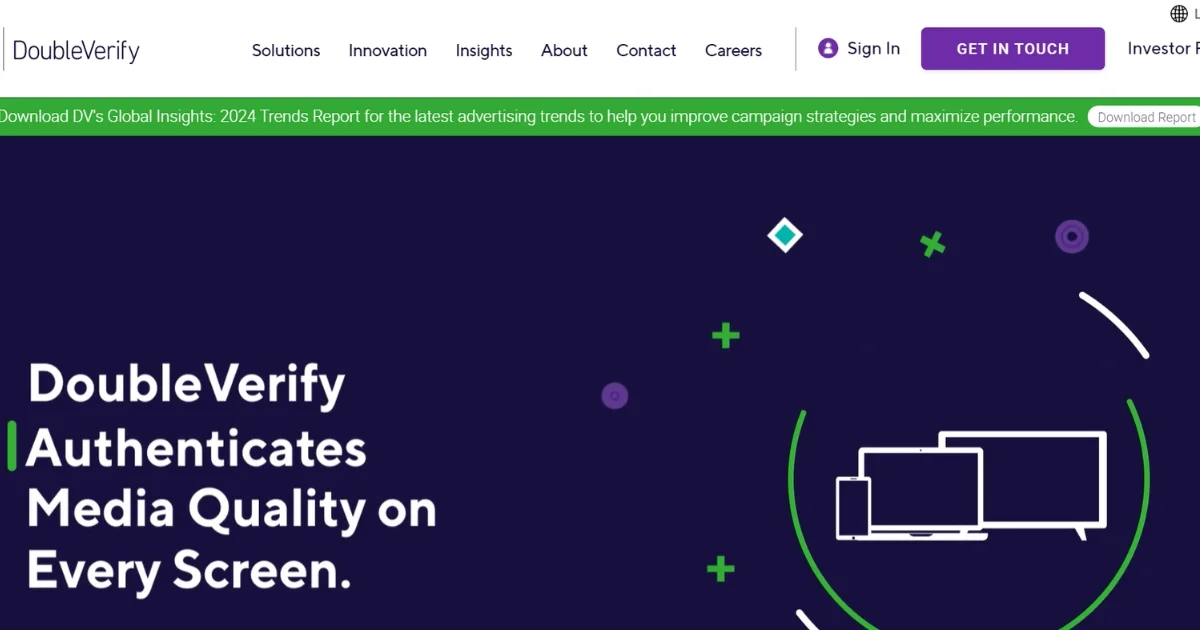
DoubleVerify excels in digital media measurement, data, and analytic solutions. With its many products and services, it assists those who advertise, publish, or use platforms, ensuring their online ads’ success and quality. DoubleVerify shines when it comes to detecting fraud and upholding brand safety. It uses smart algorithms and machine learning to spot and lessen ad frauds and brand safety threats. These may include invalid traffic, incorrect content placement, and problems with ad viewability. In this way, advertisers keep their brand’s reputation in check and make certain their ads exist in a safe setting for the brand.
Pricing: 1-5% of the advertiser’s total digital media spend
| Pros | Cons |
| Comprehensive suite of brand safety, fraud detection, and viewability solutions | Pricing can be relatively high compared to some competitors |
| Robust data and analytics capabilities to provide detailed performance insights | May be overkill for smaller advertisers with limited digital media budgets |
| Trusted industry leader with a strong reputation for quality and reliability | Limited direct integration with some programmatic platforms |
| Excellent customer support and consultative approach to implementation | – |
5. Criteo
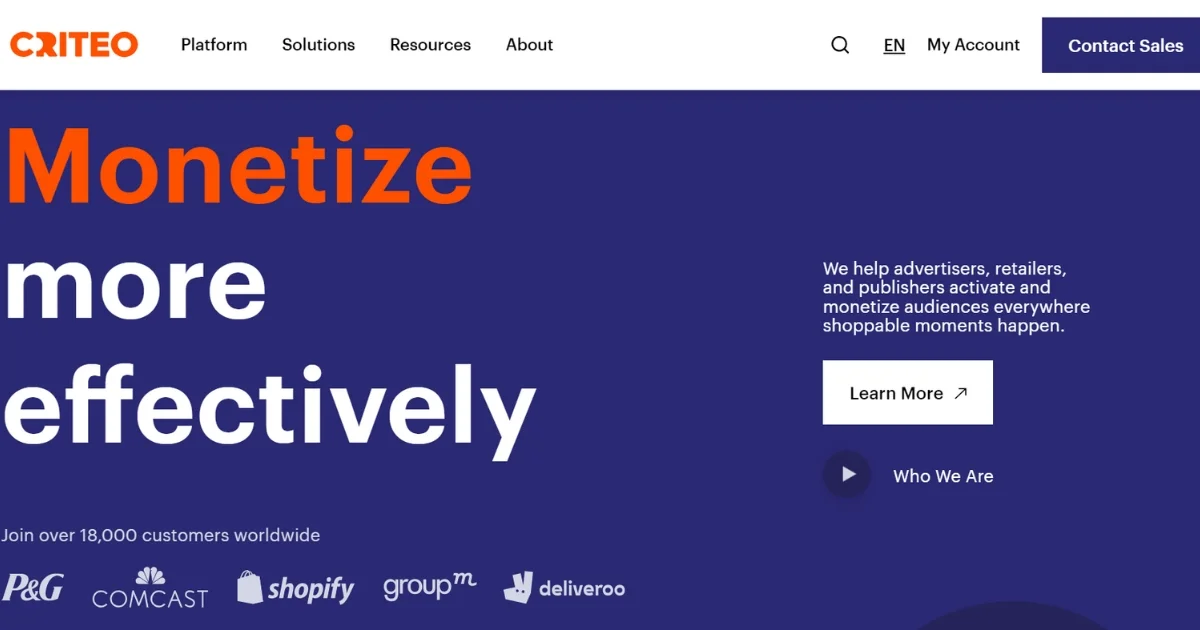
Criteo stands as a major player in the world of personalized marketing, focusing on retargeting making it one of the best programmatic advertising platforms. With robust machine learning algorithms and diverse data connections, the company’s platform crafts ads uniquely suited to the viewer across various digital spaces like display screens, smartphones, and social media.
Criteo’s secret weapon? Powerful retargeting. Through their unique algorithms, the platform studies user online action and browsing history. It identifies those who’ve interacted with any advertiser’s webpage or product before. This allows advertisers to connect again with these users, luring them back to their online platform or e-store, which in turn boosts conversions and sales.
Pricing: 10-30% of the total revenue
| Pros | Cons |
| Highly effective retargeting and personalization capabilities | Pricing model may not be suitable for all advertisers, especially those with longer sales cycles |
| Extensive data and analytics to optimize campaign performance | Limited direct integration with some programmatic platforms |
| Flexible integration with a wide range of e-commerce platforms and tools | Potential concerns around data privacy and transparency |
| Scalable solution that can support businesses of all sizes | – |
6. Sizmek (Now Amazon Ads)
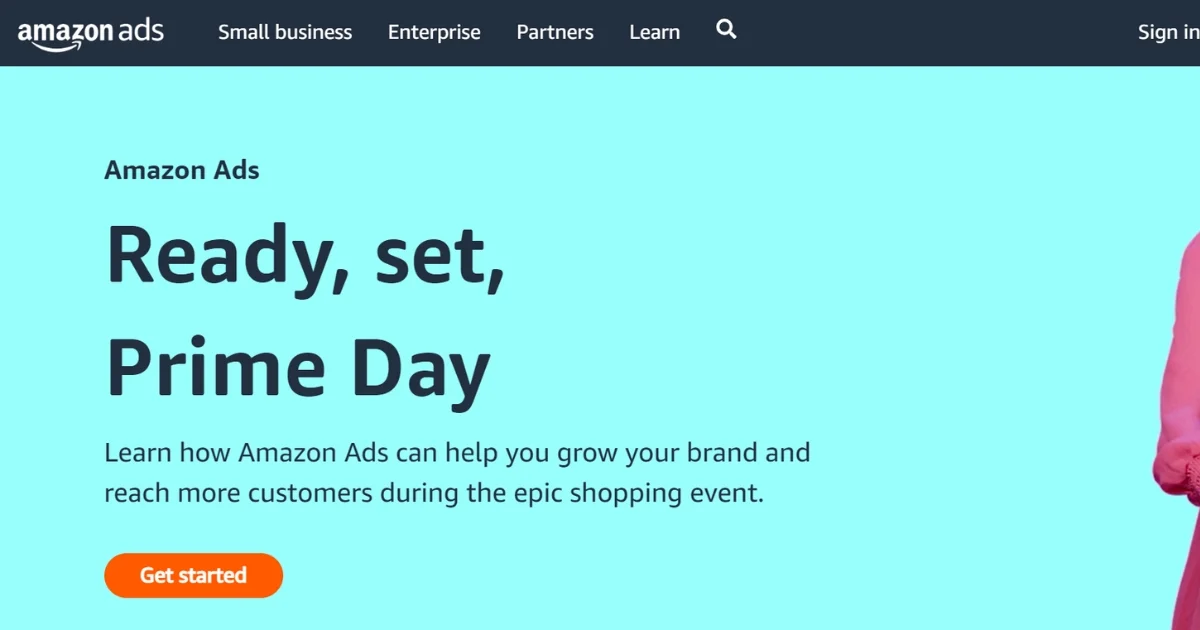
Sizmek stands as a foremost demand-side platform (DSP). It gives advertisers a practical way to buy and manage digital ads across numerous channels. These include display, video, mobile, and connected TV (CTV). The platform has a full suite of ad serving, creative, and measurement tools making it powerful for today’s marketers.
Sizmek’s unique feature is the strong audience targeting and segmentation it offers. It provides ample targeting choices, like demographic, behavioral, contextual, and location-based targeting. Thus, advertisers can reach their target audiences accurately. Furthermore, the platform’s advanced algorithms, and live data analysis help advertisers constantly upgrade their campaigns for top performance.
Pricing: 10-20% of the total ad spend
| Pros | Cons |
| Comprehensive suite of ad serving, creative, and measurement tools | Can be more complex to set up and manage compared to some competitors |
| Robust audience targeting and segmentation capabilities | Limited direct publisher integrations |
| Strong focus on brand safety and ad quality | Pricing can be less transparent than some other platforms |
| Flexible integration with a wide range of data and ad tech partners | – |
7. AppNexus
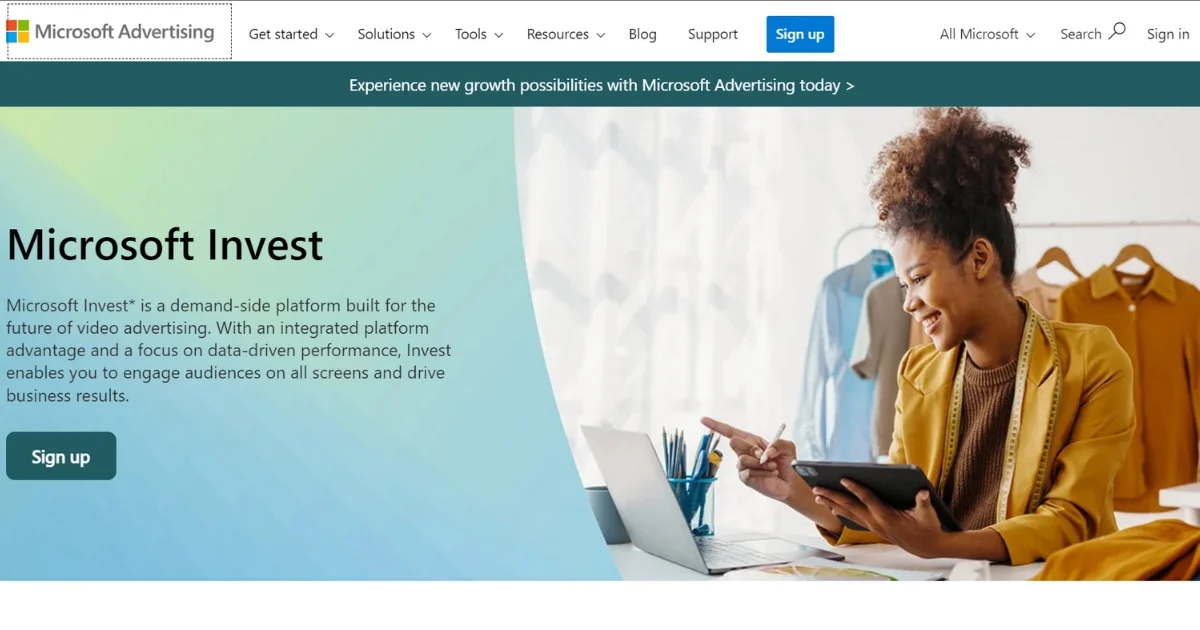
AppNexus stands as a top-tier layer in the demand-side platforms (DSP). It empowers advertisers with the ability to fine-tune and purchase digital ads, easily, across diverse channels like display, video, mobile, and even connected TV (CTV). The platform overflows with strong, adjustable capabilities, alongside a huge range of data and inventory connections. This makes it an effective tool for today’s marketers.
AppNexus really shines with its audience pinpointing and optimizing tools. Its scope of targeting options is broad – demographic, behavioural, context-based, even location-based. This precision lets advertisers reach their audience effectively. The platform’s use of machine learning further enhances campaign optimization, real-time, significantly boosting advertiser’s performance and digital ad return on investment (ROI).
Pricing: 10-20% of the total ad spend
| Pros | Cons |
| Robust and scalable programmatic capabilities | Can be more complex to set up and manage compared to some competitors |
| Extensive data and inventory integrations | Limited direct publisher integrations in certain regions |
| Advanced audience targeting and optimization tools | Pricing can be less transparent than some other platforms |
| Strong focus on brand safety and ad quality | – |
8. Amobee
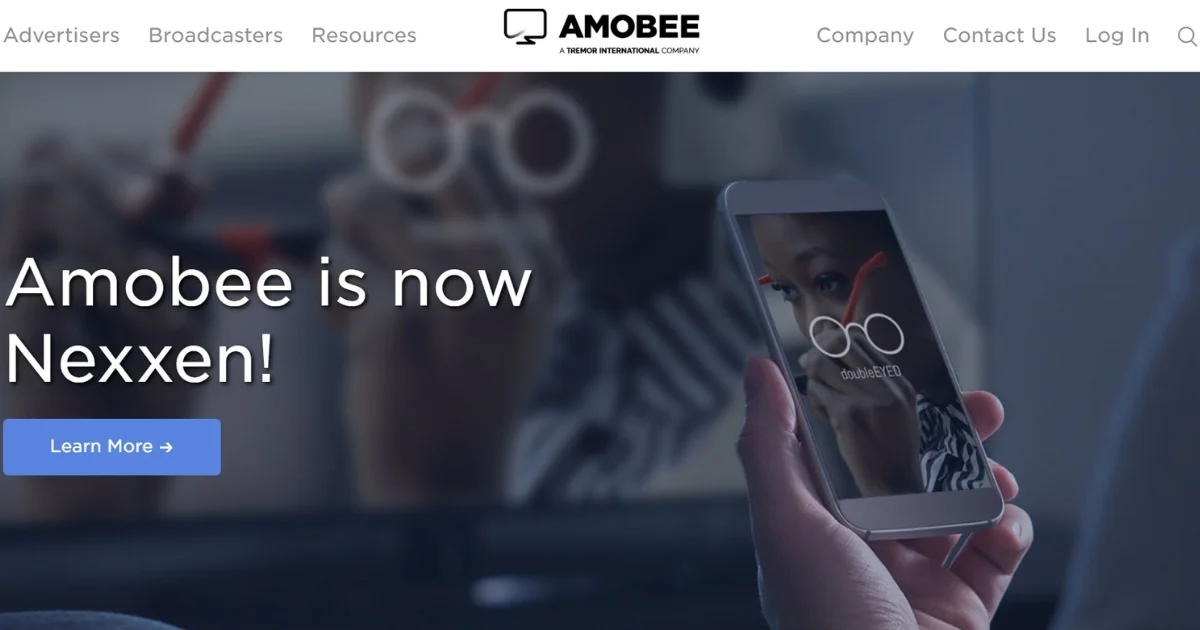
Amobee is an all-in-one ad and marketing tech platform. It has many different services. These include a demand-side platform (DSP), a supply-side platform (SSP), and many tools for data and analytics. What makes Amobee stand out is its emphasis on cross-channel and omnichannel options. A strong point for Amobee is its ability to identify and split audiences.
Thanks to the platform’s smart formulas and wide-ranging data links, advertisers can craft unique, sharply focused campaigns. These can be built for many online avenues, such as display, video, mobile, and social media. Amobee also lets advertisers smoothly plan and improve their campaigns across different contact points.
Pricing: 10-20% of the total ad spend
| Pros | Cons |
| Comprehensive suite of advertising and marketing solutions | Pricing can be higher than some self-service DSP alternatives |
| Powerful audience targeting and segmentation capabilities | Limited direct publisher integrations in certain verticals |
| Innovative cross-channel and omnichannel capabilities | Can be more complex to set up and manage for smaller advertisers |
| Strong focus on brand safety and ad quality | – |
9. OpenX
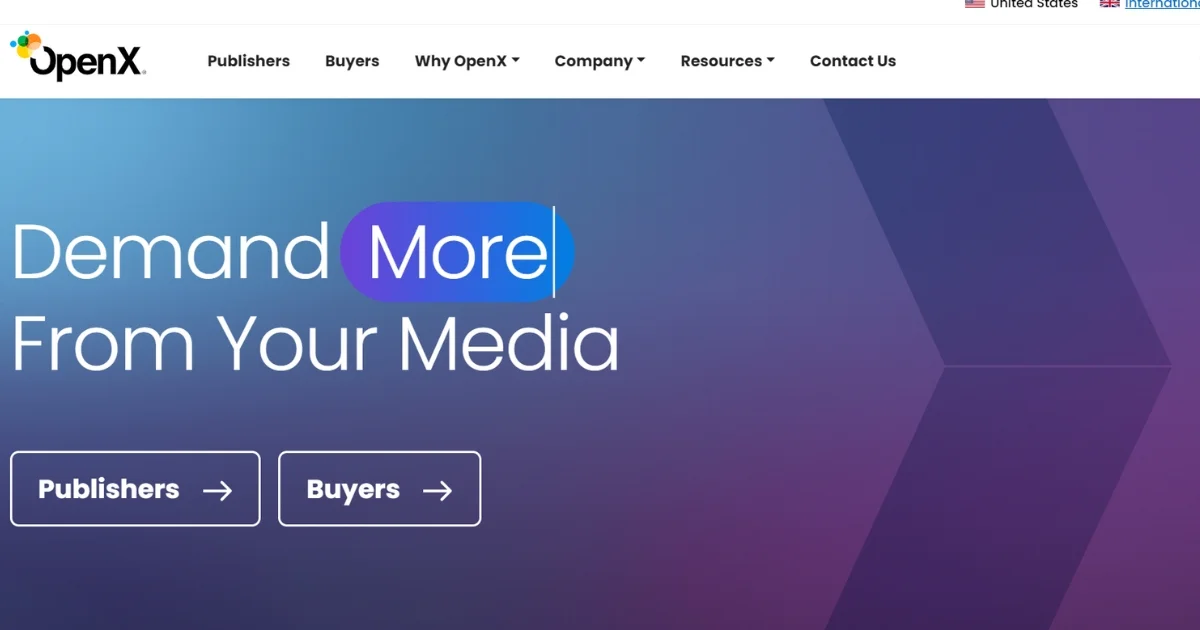
OpenX stands as a top-notch supply-side platform (SSP) that lets publishers and app creators earn from their digital resources via programmatic advertising. Added to the broad publisher and inventory links, its high-level programmatic auction and refinement facilities make it a go-to for digital media proprietors.
The focus on ad quality and user journey is a unique OpenX strongpoint making it a great choice among the various programmatic advertising platforms available. With a series of checks, the platform ensures only high-standard, non-intrusive ads get delivered through its marketplace, ones that work well with the publisher’s content and audience. This secures a pleasant user journey and protects the publisher’s brand standing.
Pricing: Exact revenue share can vary
| Pros | Cons |
| Extensive publisher and inventory integrations | Limited direct advertiser integrations compared to some DSP platforms |
| Advanced programmatic auction and optimization capabilities | Pricing model may not be as transparent as some other SSPs |
| Strong focus on ad quality and user experience | Can be more complex to set up and manage for smaller publishers |
| Flexible monetization options for publishers | – |
10. SmarytAds
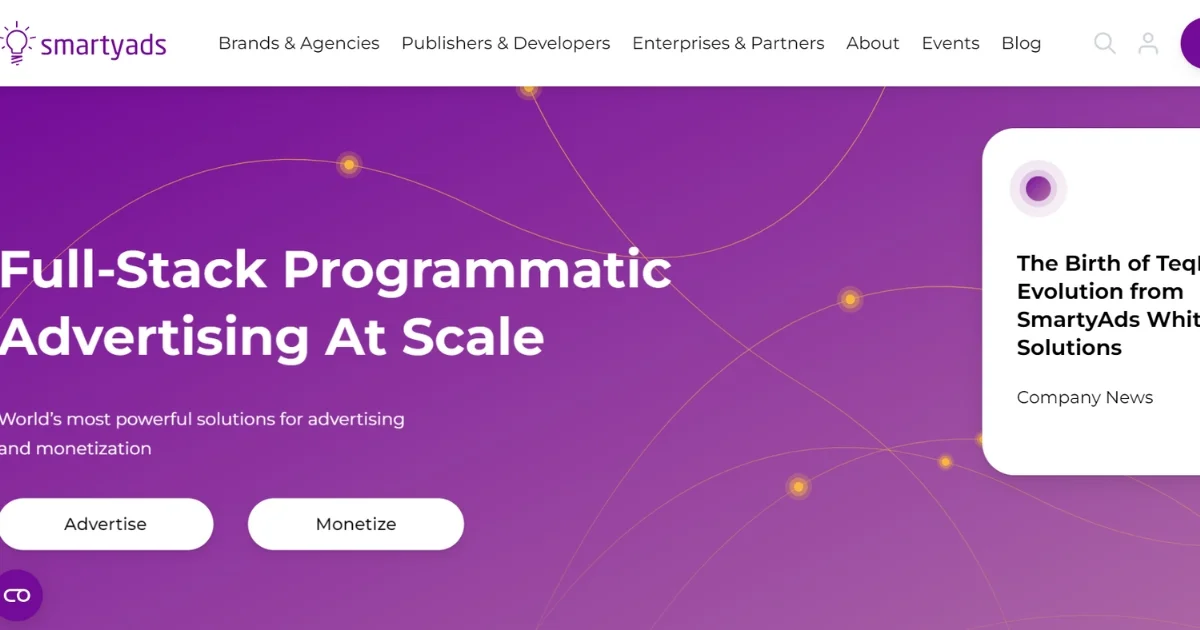
SmartyAds shines as a top supply-side platform (SSP), helping publishers and app creators make money from their digital spaces with programmatic advertising. Its high-end automated auction abilities and effective optimization, combined with comprehensive integration, attract digital media owners.
SmartyAds stands out with its emphasis on ad quality and user experience as one of the best programmatic advertising platforms. It uses various methods to guarantee that the ads delivered are top-notch, non-intrusive, and match the publisher’s content and audience. This maintains a pleasant user experience and safeguards the publisher’s brand image.
Pricing: 50-80% of the total ad revenue
| Pros | Cons |
| Extensive publisher and inventory integrations across multiple ad formats | Limited direct advertiser integrations compared to some DSP platforms |
| Advanced programmatic auction and optimization capabilities | Pricing model may not be as transparent as some other SSPs |
| Flexible monetization options for publishers, including display, video, and native ads | Can be more complex to set up and manage for smaller publishers |
| Strong focus on ad quality and user experience | Limited global reach and scale compared to some larger SSP platforms |
11. Google Ad Manager
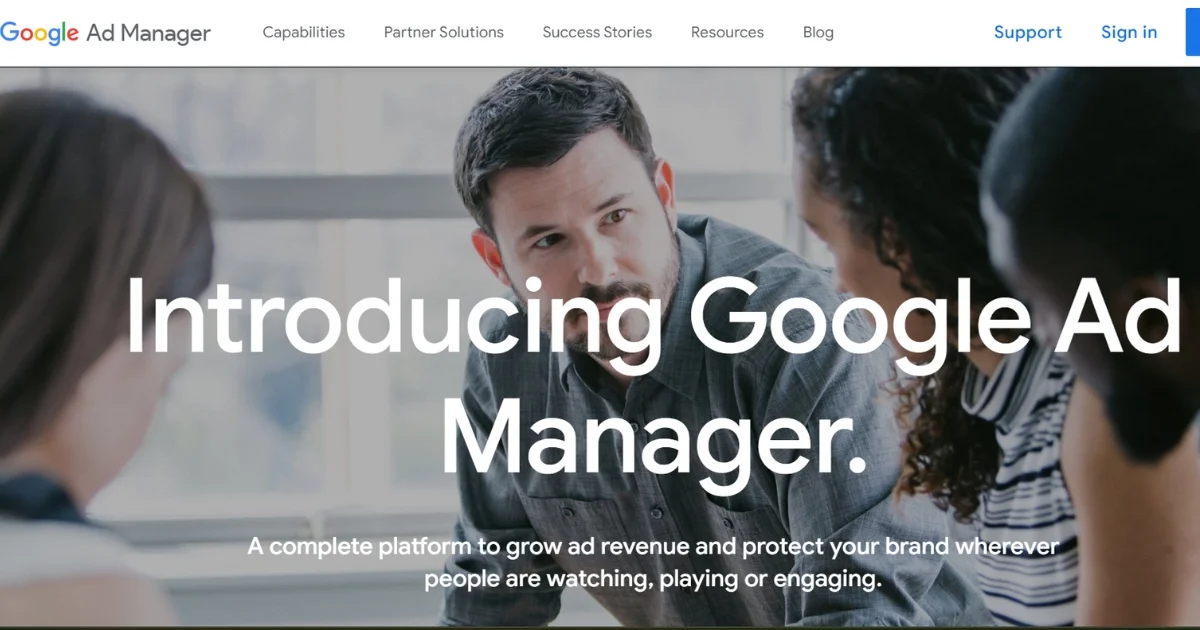
Google Ad Manager, once known as DoubleClick for Publishers, is a full-featured ad handling platform. It helps publishers earn from their digital spaces using many different ad channels such as programmatic, direct, and regular ad sales. A major benefit of Google Ad Manager is its strong tie-in with other Google ad and marketing tools. These include Google Ad Exchange, Google Ads, and Google Analytics. This connection helps publishers utilize Google’s extensive reach, precise targeting, and effective optimization to enhance the value of their ad spaces.
Pricing: 10-20% of the total ad spend
| Pros | Cons |
| Extensive integrations with Google’s suite of advertising and marketing tools | Pricing model may not be as transparent as some other SSP platforms |
| Robust programmatic auction and optimization capabilities | Limited flexibility in terms of third-party integrations and customization |
| Trusted and widely adopted platform with a large advertiser and publisher base | Can be more complex to set up and manage for smaller publishers |
| Strong focus on ad quality and user experience | Potential concerns around data privacy and Google’s market dominance |
12. Magnite
Magnite, once known as Rubicon Project, is a top supply-side platform (or SSP) that aids publishers and app creators in making money off their digital materials via automated advertising. The platform boasts excellent auction and optimization features for programmatic ads. Alongside its comprehensive network of publishers and inventory integrations, it’s a strong choice for those owning digital media and looking for different programmatic advertising platforms.
A vital aspect of Magnite’s appeal lies in its dedication to ad quality and a good user experience. It utilizes various techniques to ensure that its marketplace’s ads are top-notch, unobtrusive, and in tune with the publisher’s content and clientele, thus securing a pleasing user experience and safeguarding the publisher’s brand image.
Pricing: 10-20% of the total ad spend
| Pros | Cons |
| Extensive publisher and inventory integrations across multiple ad formats | Limited direct advertiser integrations compared to some DSP platforms |
| Advanced programmatic auction and optimization capabilities | Pricing model may not be as transparent as some other SSP platforms |
| Flexible monetization options for publishers, including display, video, and CTV/OTT ads | Can be more complex to set up and manage for smaller publishers |
| Strong focus on ad quality and user experience | Limited global reach and scale compared to some larger SSP platforms |
Conclusion
Programmatic advertising is like a chameleon, it keeps changing! We now have many types of programmatic advertising platforms offering varied features and ways to earn. Popular names? SmartyAds, Google Ad Manager, and Magnite! Each stands out in its own way. Navigating this ever-shifting and somewhat tricky landscape is crucial for anyone who wants to make the most of their digital content for marketing. Understanding the costs, features, and compromises of these programmatic advertising platforms are vital steps. This way, industry insiders can make wise choices and stay ahead of trends in the quicksilver world of programmatic advertising.
FAQs on Programmatic Advertising Platforms
What are Programmatic Advertising Platforms?
Programmatic advertising platforms are online tools used to automatically handle digital ad trades. With sophisticated formulas and information, these programmatic advertising platforms match advertisers and appropriate digital spaces, leading to better ad positioning.
How do Programmatic Advertising Platforms work?
Programmatic advertising platforms rely on real-time bidding and further automation to manage digital ad sales. Advertisers dictate specifics on where ads go, and publishers provide the space to the top bidder. Platforms then pair the right ads and audiences using information and algorithms, enhancing campaign outcomes for everyone involved.
What are the benefits of using Programmatic Advertising Platforms?
Programmatic advertising platforms are full of benefits, like efficiency, optimal targeting, and improved campaigns. They automate ad trade, saving advertisers and publishers time and effort. Plus, they enable detail-oriented targeting which can boost interaction and conversions. Not forgetting, they can increase campaign returns through real-time enhancements.
What are the different types of Programmatic Advertising Platforms?
Programmatic Advertising Platforms come in various forms, i.e., demand-side platforms, supply-side platforms, and ad exchanges. While demand-side platforms allow programmatic ad buying, supply-side platforms make available space to top bidders. Ad exchanges link buyers and sellers instantly.
How do I choose the right Programmatic Advertising Platform for my business?
Picking suitable programmatic advertising platforms for your business can seem complex. It’s wise to weigh your ad targets, audience, budget, and the platform's specific offerings. Do consider data privacy and security, and if it supports other tools you’re using. It helps to consult a digital ad professional to guide you in selecting the platform best suited for your needs.

Add a Comment